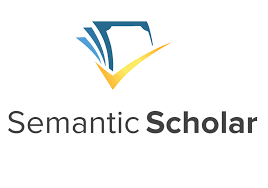Understanding Collocations in English: Linguistic Nature, Learning Challenges, and Pedagogical Implications
DOI:
https://doi.org/10.69760/aghel.0250020017Keywords:
lexical collocations, grammatical collocations, translation challenges, semantic mismatch, lexical approachAbstract
Collocations, or habitual word combinations, play a pivotal role in achieving fluency and naturalness in English language use. Despite their importance, they often present significant challenges for learners and translators due to their fixed nature and limited translatability. This article examines the definition, classification, and types of collocations, with a focus on lexical and grammatical groupings. It also highlights the difficulties non-native speakers face in acquiring collocational competence, particularly issues related to semantic mismatch and cross-linguistic interference. Additionally, the paper discusses pedagogical approaches and strategies that can help learners develop better control over collocational patterns. Emphasis is placed on the role of explicit instruction, contrastive analysis, and the use of corpus-based resources in enhancing language teaching and translation effectiveness.
References
Benson, M., Benson, E., & Ilson, R. (1986). The BBI Combinatory Dictionary of English: A Guide to Word Combinations. Amsterdam: John Benjamins Publishing.
Firth, J. R. (1957). Papers in Linguistics 1934–1951. London: Oxford University Press.
Hajiyeva, B. (2025). Translating Idioms and Slang: Problems, Strategies, and Cultural Implications. Acta Globalis Humanitatis et Linguarum, 2(2), 284-293.
Hill, J. (2000). Revising priorities: From grammatical failure to collocational success. In M. Lewis (Ed.), Teaching Collocation: Further Developments in the Lexical Approach (pp. 47–69). Hove: Language Teaching Publications.
Khudaverdiyeva, T. (2024). Enhancing Language Learning in Young Learners Through Azerbaijani Fairy Tales. EuroGlobal Journal of Linguistics and Language Education, 1(1), 141-150.
Lewis, M. (1997). Implementing the Lexical Approach: Putting Theory into Practice. Hove: Language Teaching Publications.
Mammadova, I. (2024). The Role of Proverbs in Language Learning: A Cognitive and Cultural Perspective. EuroGlobal Journal of Linguistics and Language Education, 1(1), 40-45.
Mammadova, I. (2025). Cognitive and Pedagogical Dimensions of Translation: A Theoretical and Practical Exploration. Acta Globalis Humanitatis Et Linguarum, 2(1), 213-220.
Nation, I. S. P. (2001). Learning Vocabulary in Another Language. Cambridge: Cambridge University Press.
Sadiqzade, Z. (2025). From Neologisms to Idioms: Tracing Literary Innovation in the Evolution of the English Lexicon. Porta Universorum, 1(1), 13-18. https://doi.org/10.69760/k2g75h54
Sadiqzade, Z. (2025). The Linguistic Expression of Emotion: A Cross-Cultural Analysis . EuroGlobal Journal of Linguistics and Language Education, 2(3), 42-54. https://doi.org/10.69760/egjlle.2500195
Sadiqzade, Z., & Alisoy, H. (2024). Level-Up Learning: Using Games to Teach English Across Student Levels. EuroGlobal Journal of Linguistics and Language Education, 1(3), 181-194. https://doi.org/10.69760/egjlle.20240104
Downloads
Published
Issue
Section
License
Copyright (c) 2025 Acta Globalis Humanitatis et Linguarum

This work is licensed under a Creative Commons Attribution-NonCommercial 4.0 International License.







